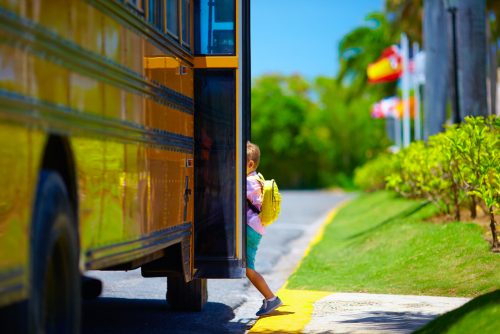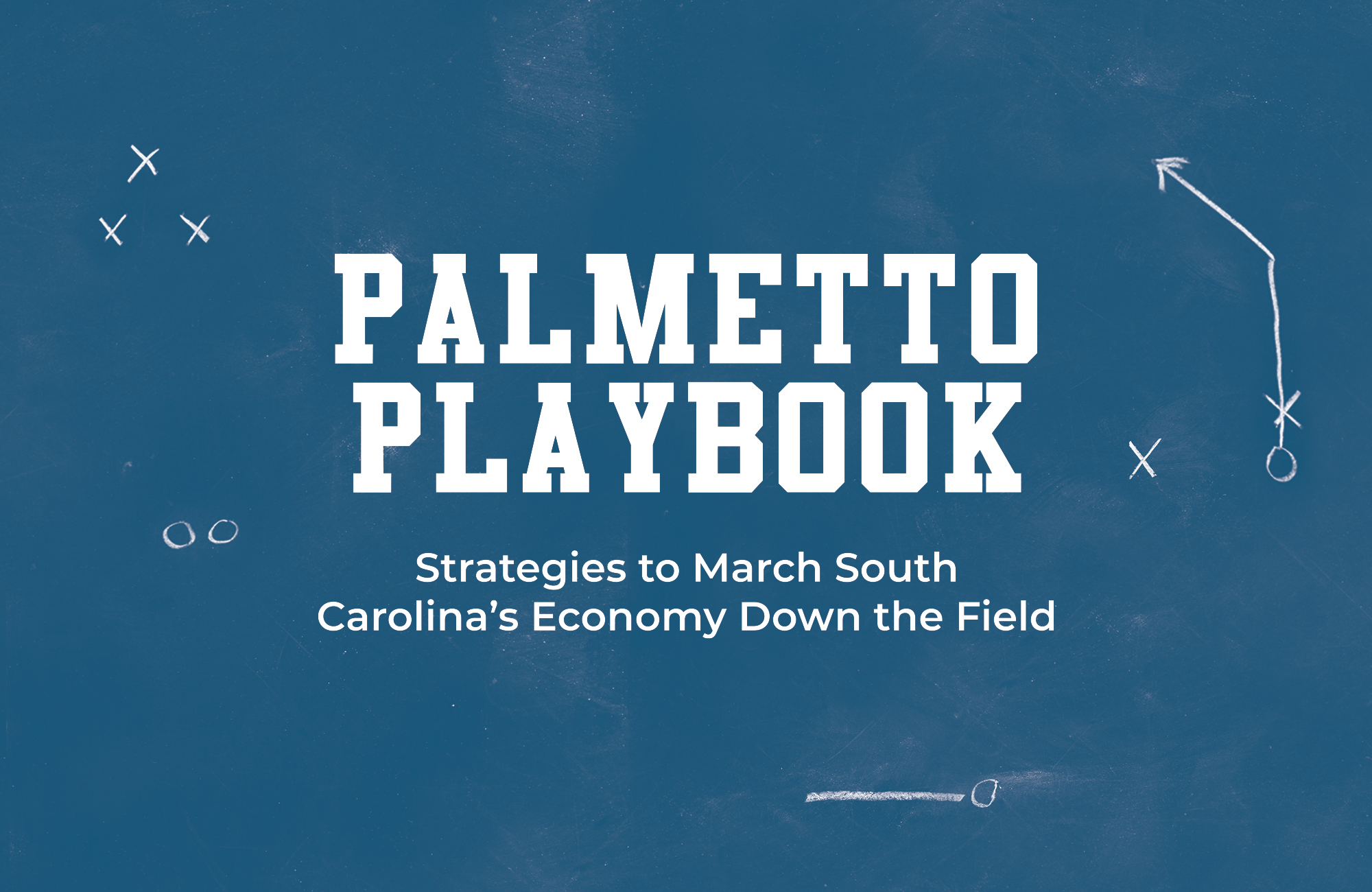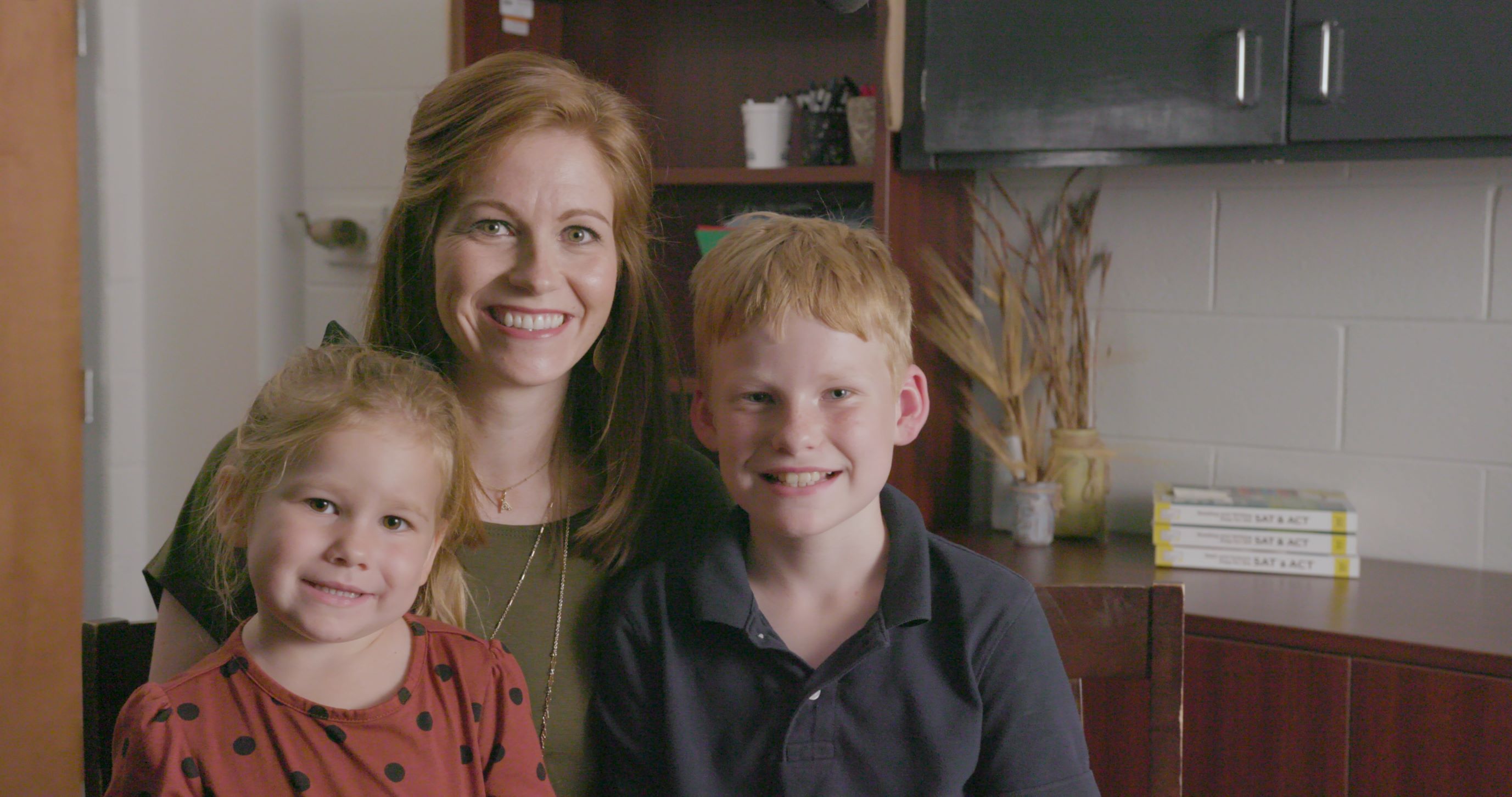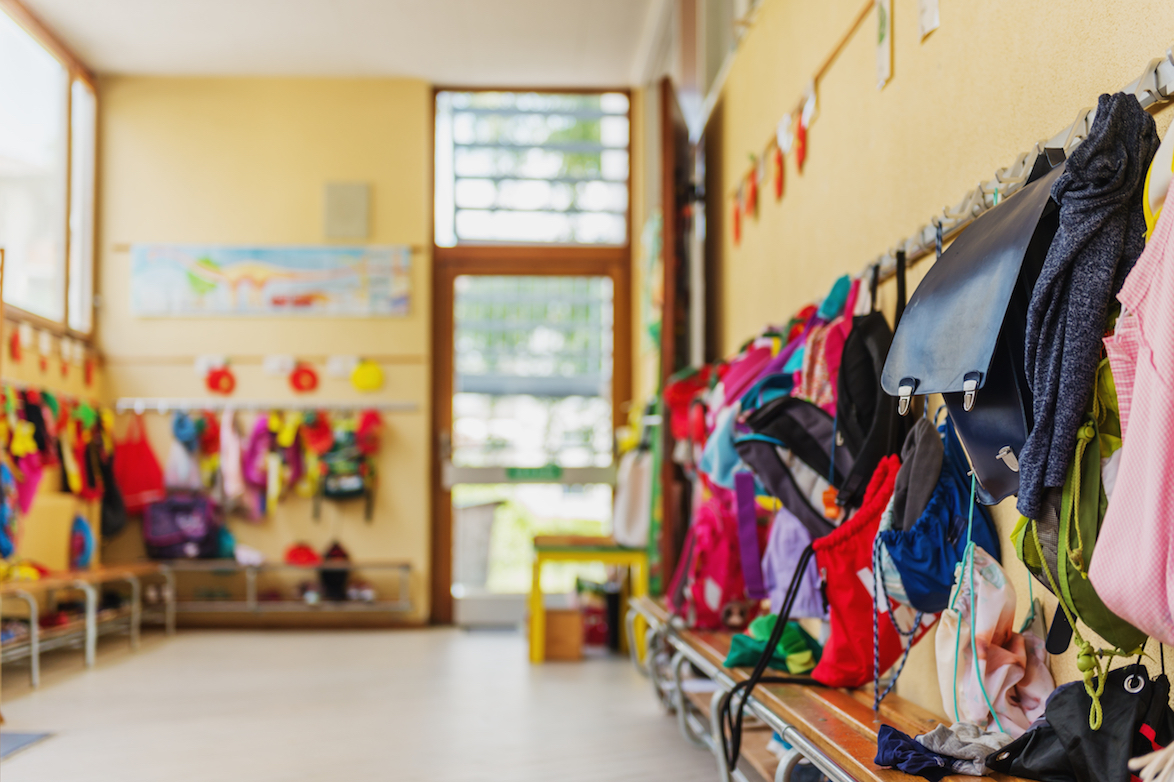South Carolina private schools uniquely impacted by COVID-19, could help be on the way?
It would be an understatement to say that COVID-19 has disrupted the education of South Carolina’s children.
Parents and students alike have had to adjust to the new normal of learning from home, and teachers and school administrators have scrambled to provide instruction from a distance, with widely varying results due to a variety of circumstances and challenges.
Much has been reported about the impacts on public education, which serves nearly 790,000 of South Carolina’s K-12 students, and has quickly scrambled to provide meals and innovative ways to deploy internet access on school buses.
From the national level, U.S. Education Secretary Betsy DeVos has waived federal testing requirements for public schools and instituted new funding flexibility so that districts can redirect funds to technology infrastructure and other distance learning needs. Congress has also stepped in, appropriating billions of dollars through the CARES Act to help mitigate the impacts of school closures on student learning.
But while all of these issues are important to a vast number of children, issues in another vital education sector have gone largely unreported. How has this crisis impacted South Carolina’s private schools and the over 50,000 students they currently serve?
Private Schools are in crisis mode
While South Carolina’s public schools receive their funds from a mixture of federal, state, and local tax dollars, private schools rely largely on tuition payments to meet their operational costs.
A Palmetto Promise Institute survey of 84 independent South Carolina schools found that at least 20% of their students were already receiving some form of needs-based tuition assistance prior to the COVID-19 pandemic.
That need is sure to rise dramatically for the 2020 fall semester. And with corporate and private philanthropy for student scholarships likely to slow, schools will be facing declining enrollment with some even facing tough decisions about if they can afford to keep their doors open.
These hardships create a major ripple effect of impacts across the entire K-12 education system:
- Students—who have already experienced significant disruption to their learning this year—will once again be forced to transition to a new learning environment and face further disruptions, perhaps at a school that is not best equipped to meet their needs.
- Local school districts—although receiving a significant infusion of one-time federal cash—will certainly be facing declining state and local tax revenues. Absorbing an influx of students whose parents had to take them out of their private school due to either school closures or lack of resources is one more strain on district budgets.
- The state of South Carolina—which most certainly will be forced to tighten the collective budget belt over the next year—will then be forced to find new funds to support additional students at a time when the state can least afford it.
A look at the numbers for South Carolina
EdChoice recently ran the numbers to get a feel for the impact of this potential influx of students into South Carolina’s public education system.
Using nationally-reported private school enrollment numbers from 2017-18, EdChoice estimates that if 10% of private school students returned to their local district school, it would cost the state $31 million dollars. When they looked at total estimated cost (state plus local) to absorb a 10% migration of students into the system, it would cost a combined $58.6 million dollars.
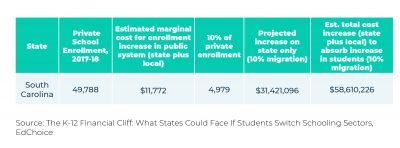
What can be done to help independent schools address the crisis?
Under the CARES Act’s Education Stabilization Fund, South Carolina will receive $410.2 million, divided into three distinct pots:
- $204 million is allocated specifically for Elementary and Secondary School Emergency Relief. The law specifically states that private school students must have equitable access to services provided by these funds, which will flow through the South Carolina State Department of Education (SDE) to local districts (known as Local Education Authorities or LEAs). It will be up to the LEA’s to ensure that private school students receive the “equitable services” the current law dictates.
- $159 million will be provided for higher education, and both public and private universities are eligible to receive these funds to offset rebates for tuition, room and board, and other expenses incurred because of the pandemic.
- $47 million is designated to the Governor’s Emergency Education Relief Fund (GEER). This fund could be a critical lifeline directly to private schools, because it grants the Governor flexibility to include “education-related entities” and protect “education-related jobs,” including those at private schools Palmetto Promise as been advocating for exactly that over the last month, recognizing that it’s in the best interest of all students for private schools to continue their operations.
The CARES Act also provided funds through the Paycheck Protection Program (PPP) administered through the U.S. Small Business Administration (SBA), in the form of loans for which non-profits—including private schools—could apply to help meet payroll needs.
Some schools have been approved for these funds, while others are still waiting or weren’t approved before funds they ran out. Congress is currently debating whether or not to appropriate more money to replenish the PPP.
Conclusion
Private schools face enormous challenges in the wake of COVID-19. These challenges impact us all.
There are several ways we can ensure private schools will receive necessary relief, including directing some portion of emergency grant funds specifically to private schools and closely monitoring other funds to ensure that there is an equitable share between public and private school students.
We will have more to come on this as it develops over the next few weeks. In the meantime, below are some additional resources.
Additional Resources
Our friends at ExcelinEd have put together a 3-page sheet with emergency recommendations for private schools, which you can read here. Additionally, Dr. Ben Scafidi and Dr. Eric Wearne put together a very helpful analysis on how independent and private schools will be affected by this and the outlook over the next few months, which you can read by clicking here.
Here at Palmetto Promise, we’ve also compiled a helpful list of resources for parents as they continue to adjust to the new normal of at-home education.
Last year, Palmetto Promise, in partnership with EdChoice, released a survey of South Carolina’s private school sector. Learn more about this vital part of South Carolina’s education ecosystem.
Finally, we applaud the emphasis Secretary DeVos has placed on creating continuity of education for all students, public and private:
“Governors have the opportunity to truly rethink and transform the approach to education during this national emergency and ensure learning continues. At a time when so many school boards and superintendents have shut down learning for the balance of the school year, I want to encourage each and every governor to focus on continuity of education for all students. Parents, families, teachers and other local education leaders are depending on their leadership to ensure students don’t fall behind.”
